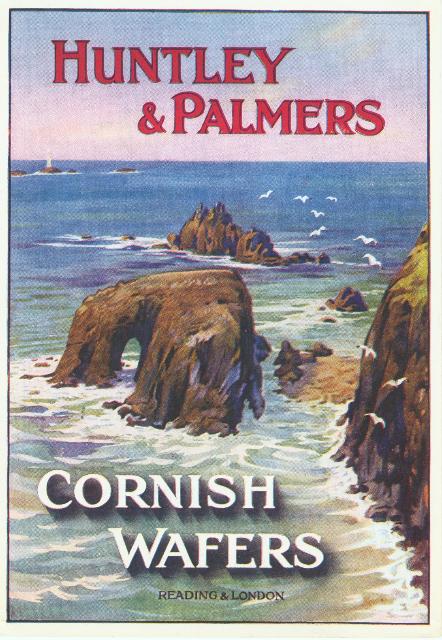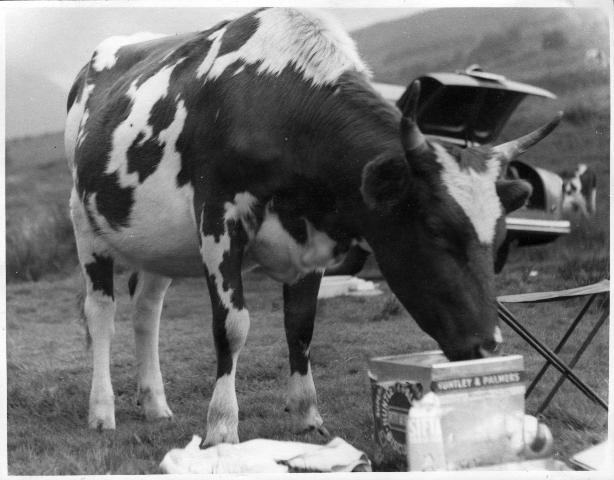The changes in consumer habits by the 1950s led to people eating less food in general - partly because they were busier and partly because an improved knowledge of nutrition demonstrated the benefits of a lighter and more balanced diet. Less sustaining foods meant more snacks in-between meals. Teashops, milk bars and snack bars grew up catering for the office workers.
Cornish Wafers
In 1959 a renewed marketing campaign was undertaken by Huntley & Palmers, with a particular focus on the Breakfast biscuit, as a food for slimmers, and the Cornish Wafer. The campaigns were so successful that the Cornish Wafer became the company's best seller and supplies of both biscuits had to be rationed to suppliers.

After World War I, Huntley and Palmers lost a significant share of the domestic market. They increased their advertising expenditure by £40,000, leading to success for their Cornish Wafer variety. (REDMG : 1997.82.580)
Reduction in varieties
From 1960 the development of Reading into a more cost-efficient factory continued, with particular pressure once Jacobs joined the group. The company had to accept the reduction in the number of varieties with the cutting of all its loss-makers. By the end of 1968 it produced only two basic kinds of cake and less than forty different kinds of biscuit.

In the 1950s and 1960s people like this Huntley & Palmers employee arrived from the Caribbean to work in Reading’s companies and public services. (REDMG : 1997.130.314)
The best biscuits
The production of Huntley & Palmers biscuits came to an end first in Reading and then in the factory at Liverpool. During 150 of years of production many people from all over the world had enjoyed the delicious taste of their biscuits and cakes. At their peak in the early 1900s, over 400 varieties of biscuits were produced by the firm. This figure appears especially high when compared to the 30 or so varieties found on supermarkets shelves today.

A cow eating biscuits from tin in 1954 (REDMG : 1997.130.538.11)
However it was not just people who enjoyed Huntley & Palmers biscuits. This photograph was received with a letter from Douglas Stokes, dated 24 November 1954. It read: 'Dear Sirs, I thought that you might be interested to see the enclosed photograph which I took whilst on a camping holiday in Glen Douglas, Scotland. The cow was rather an unwelcome visitor but surely you can congratulate her on such good taste.'
In the next section, follow an authentic Huntley & Palmers recipe and learn to make some biscuits of your own!





